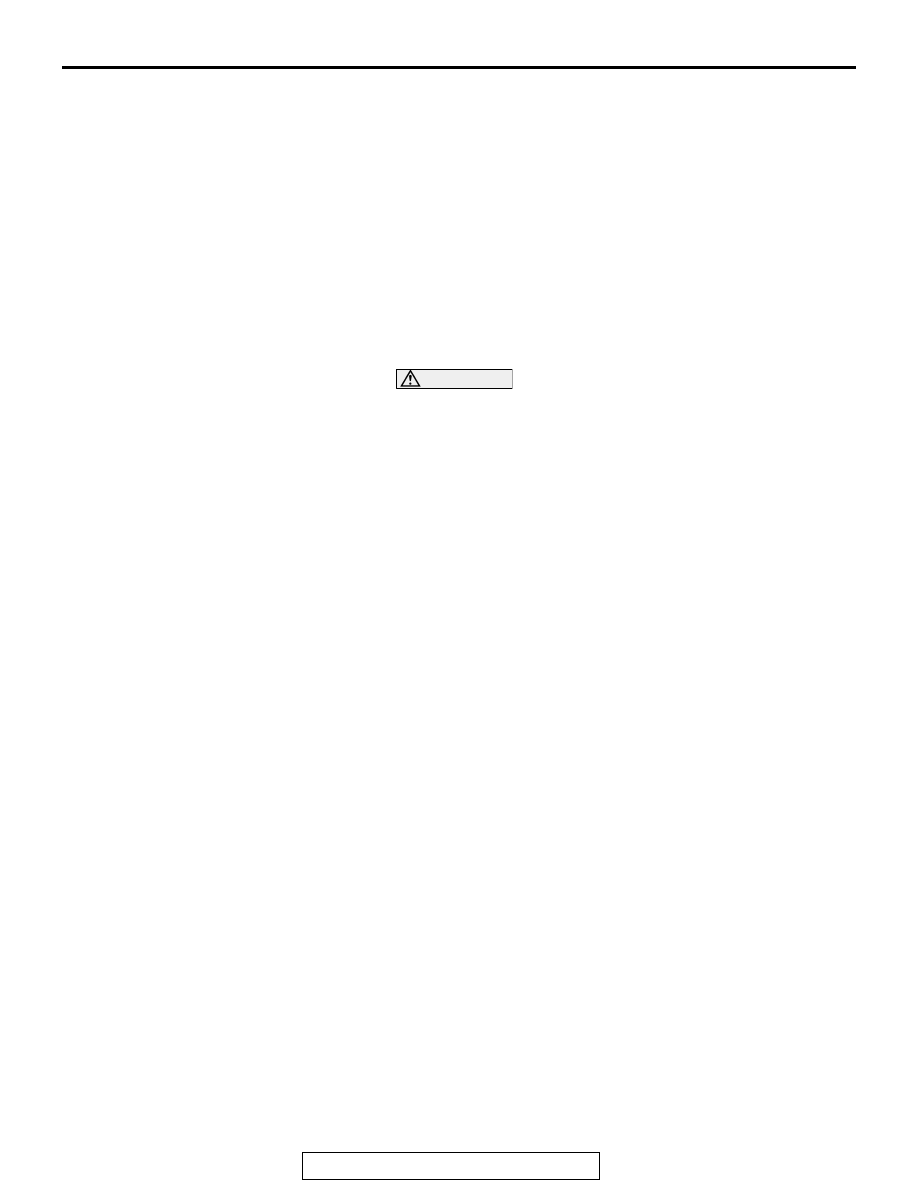Content .. 1202 1203 1204 1205 ..
Mitsubishi Outlander GS45X. Manual - part 1204

PRECAUTIONS BEFORE SERVICE
TSB Revision
GENERAL
00-59
FORM
−IN−PLACE GASKET (FIPG)
M1001014200154
.
The engine has several parts to which the form-in-place gasket
(FIPG) is used. To sufficiently achieve the aims of this gasket, it
is necessary to pay attention to the application amount, proce-
dure, and surface status.
If the application amount is too small, a leakage will occur. If the
application amount is excessive, the FIPG will overflow and
cause a clogging or narrowing of water and oil paths. There-
fore, to eliminate the leak from the joint, it is indispensable that
the FIPG be applied with a correct amount and without any
gap.
Because the FIPG used for the engine parts becomes hard-
ened by the reaction with the atmospheric moisture, it is nor-
mally used for the metal flange section.
.
CAUTION
Reapply the FIPG with care to the followings.
1. Completely remove the old FIPG including the residue
in gaps of parts.
2. Using Mitsubishi genuine parts cleaner (MZ100387) or
equivalent, degrease the FIPG application surface care-
fully.
3. According to the FIPG application procedures, apply it
accurately.
.
DISASSEMBLY
The parts installed with the FIPG can be disassembled easily
without using any special method. However, in some cases, it
is necessary to tear the sealant in between the mating surfaces
by tapping the parts with a wooden hammer or similar tools. It is
acceptable to lightly hit in a smooth, thin gasket scraper into the
mating surface, but, in this case, a sufficient caution is required
not to damage the mating surface. The oil pan FIPG cutter
(Special tool: MD998727) is provided. Thus, use this special
tool.
.
GASKET SURFACE CLEANING
Use a gasket scraper or wire brush to completely remove all
the foreign materials adhering to the gasket surface. Check
that the FIPG application surface is smooth. There must be no
grease or foreign material adhesion to the gasket surface. Do
not forget to remove the old FIPG remaining in the mounting
hole and tapped hole.
.
APPLICATION PROCEDURE
Apply the FIPG with a specified diameter and without any gap.
Completely enclose around the mounting hole. When the FIPG
is not hardened, it can be wiped off. Install the parts immedi-
ately after applying the FIPG. At the time of installation, prevent
the FIPG from adhering to locations other than it is necessary.
After the installation, until a sufficient period of time (one hour
or more) elapses, do not contact the oil or water to the applica-
tion area. Also, do not start the engine. Because the FIPG
application procedure may differ depending on the application
area, apply the FIPG according to the procedure described in
the text.